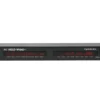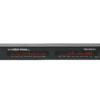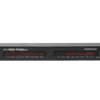Power and Amperage vs. Electrical Wire Size in AWG
When setting up a multi-room streaming amplifier and ceiling speakers, knowing the right wire gauge and amperage is crucial. The wire size must match the circuit’s amperage rating to prevent overheating and potential electrical issues. Higher amperage means thicker wires are needed to safely handle the load. Understanding your system’s power needs, checking your home’s existing wiring, and consulting a wire size chart can help ensure a safe and efficient installation.

What Are American Wire Gauges (AWG)?
Wire gauges measure the thickness of electrical wires. The American Wire Gauge (AWG) system sets the standard sizes. Higher gauge numbers mean thinner wires, while lower gauge numbers indicate thicker wires that can handle more current over longer distances.

What gauge speaker wire do I need for home theater?
First step, let’s calculating the exact current draw of an amplifier is not only difficult but also inconsistent due to multiple variables within the home, such as the music being played, the volume being used and resistance in the wire. An equation that will provide the user with a good estimate as to what the current draw will be:
sqrt(Power/Impedance) = Expected Average Current Draw
The power per channel of HoloWhas Ultra, Plus and Max is separately 60W, 100W and 200W, the expected average current draw when use 8ohm speaker should be sqrt(60/8, 100/8, 200/8), ie. 2.74A, 3.53A, 4.99A.
Second step, let’s lookup the above table with the Ampage, and find that 16-gauge is Ok for all HOLOWHAS series amplifier.
For most home theater systems, 16-gauge wire is all you’ll need. However, if your speakers are more than 50 feet away from the receiver, stepping up to 14-gauge isn’t a bad idea. Also, if you’re using lower-impedance speakers, 14-gauge is best.
Copper vs. Aluminum Wiring
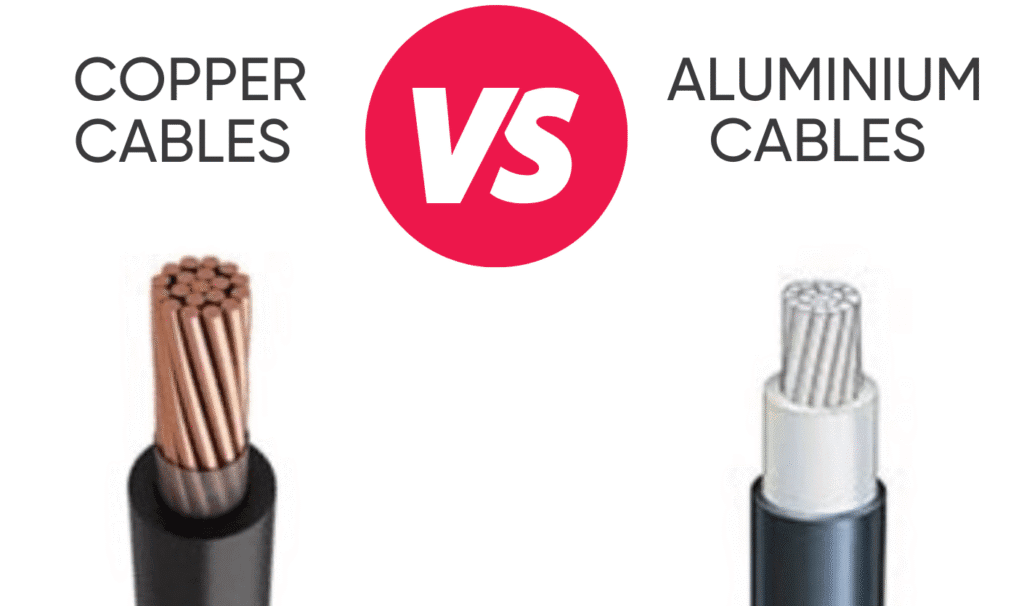
When working with electrical wiring, it’s essential to refer to the wire size chart for copper wires. However, it’s also important to be aware that aluminum wires might be present in older installations.
Aluminum wiring was commonly used for fixed installations during the 1960s and 1970s as a cost-saving measure in home construction. However, it has some drawbacks compared to copper. Aluminum wires have a lower current-carrying capacity, meaning they need to be thicker to handle the same amount of current. Additionally, aluminum tends to expand when heated, which can lead to connection problems and potential fire hazards over time.
While copper wiring is more expensive than aluminum, it is now the preferred choice for residential use. Copper offers superior strength, durability, and conductivity, making it a safer and more reliable option for modern electrical systems.
Length of Wire
The length of the wire will determine how much resistance is inline. A longer wire will have more resistance that limits the current flow. To allow the current to flow as needed through that resistance, a larger wire will be needed.

Think of two water nozzles turned to the identical flow, except one has a very tiny hose and the other is larger. The larger hose will allow stronger flow of water where the smaller hose is changing the pressure of the water flow. The same goes for current passing through a large and smaller wire.
The length of the ground wire has a big part of the system as well. In a high-current system, we highly recommend that the user does not ground the amplifier directly to the chassis.
Stranded vs. Solid Wire
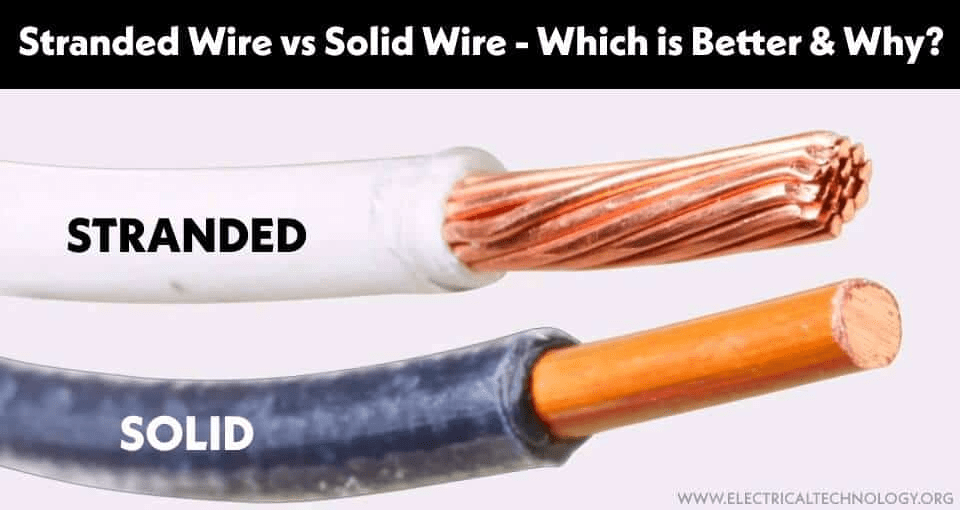
It’s also important to purchase the style of wire that best fits your needs. Stranded wire is made up of multiple small strands woven together within insulation and tends to be more flexible, making it ideal for smaller areas. However, it’s also prone to fraying and more susceptible to damage.
Solid wire, on the other hand, is made of a single solid copper conductor. It tends to be much easier to secure in standard switches and receptacles and is best used for rewiring and installation projects needing a higher ampacity.
Other Advice
One thing you will want to look for is the thickness of the actual copper wire itself. Oftentimes, inexpensive wiring will claim to be a 4AWG wire, for example, but when you cut the wire, you will see that it has a very thick protective jacket and the wire really contains a 6 gauge run of copper wiring inside.
The thick protective jacket is misleading, since on the outside, the less expensive wire looks the same as a true 4AWG wire. However, the lack of copper inside will severely inhibit your amplifier’s overall performance.
It’s also a good idea to stay clear of CCA (Copper Clad Aluminum) wire because it is far less conductive than true copper and can cause significant voltage drops.
When in doubt about what power wire to choose, it’s always a good idea to go a step larger. Choosing a larger cable will never hurt your system; it will only cost little bit more money. However, this is an investment in your equipment that is well worth making. If you decide to go with a smaller sized cable, this will allow less current to flow, leading to voltage drops that will limit the amplifier’s output potential, as well as posing serious safety issues.


